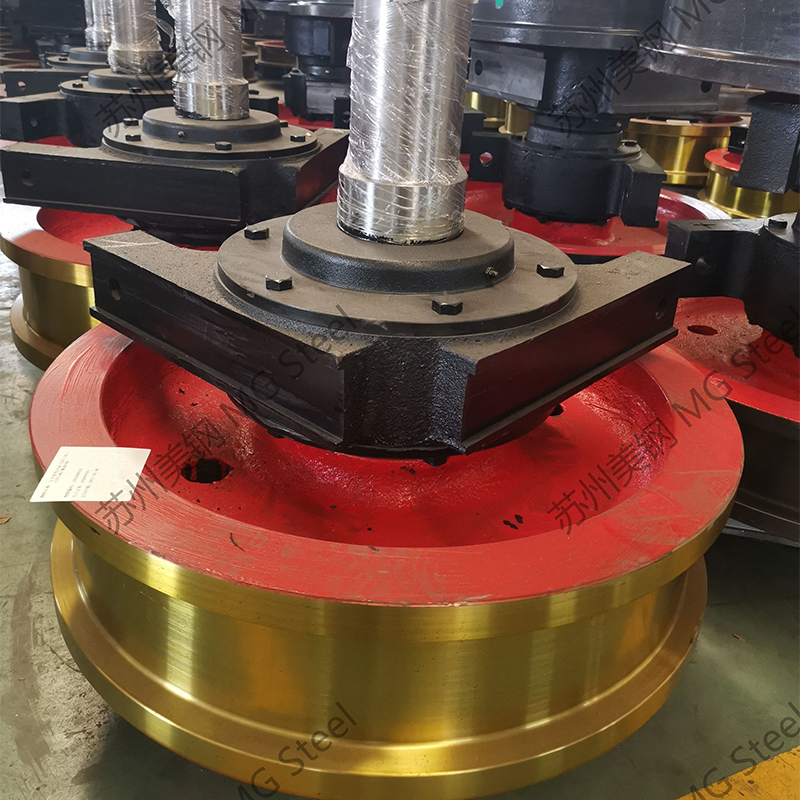Crane wheels, as an indispensable support and traveling part of the crane, bear the weight of the entire lifting equipment and the lifted objects, and are a key factor in ensuring the smooth and safe operation of the crane. Crane wheels are highly professional and specific in design and manufacturing to meet the needs of stable operation of cranes in complex working environments.
Structure and design: Wheels usually consist of a hub, rim, and spokes. The hub is the central part of the wheel, which is connected to the crane's shaft system to bear and transmit loads. The rim is the outer edge part of the wheel, which is in direct contact with the ground or track, providing the necessary friction and support. The spokes are the parts that connect the hub to the rim and are usually made of strong steel to ensure the strength and stability of the wheel. The design of the crane wheels fully takes into account the working characteristics of the crane, such as large load capacity and complex working environment. Therefore, the material selection, heat treatment process, and manufacturing process of the wheel are strictly controlled to ensure that it has wear resistance, impact resistance, and load-bearing capacity.
Function and role: Wheels play an important role in the operation of the crane. First, it serves as the contact point between the crane and the ground, providing stable support for the crane and ensuring that the crane maintains balance when lifting and carrying heavy objects. Secondly, the wheels provide the necessary traction and braking force for the crane through friction with the ground or track, so that the crane can move and stop according to instructions. In addition, the crane wheels also have a certain buffering and shock-absorbing effect. During the operation of the crane, the wheels will be subject to a certain amount of impact and vibration due to uneven ground or errors in the track. High-quality wheel design can effectively reduce the impact of these shocks and vibrations on the crane and improve the stability and safety of the crane.



 English
English русский
русский















